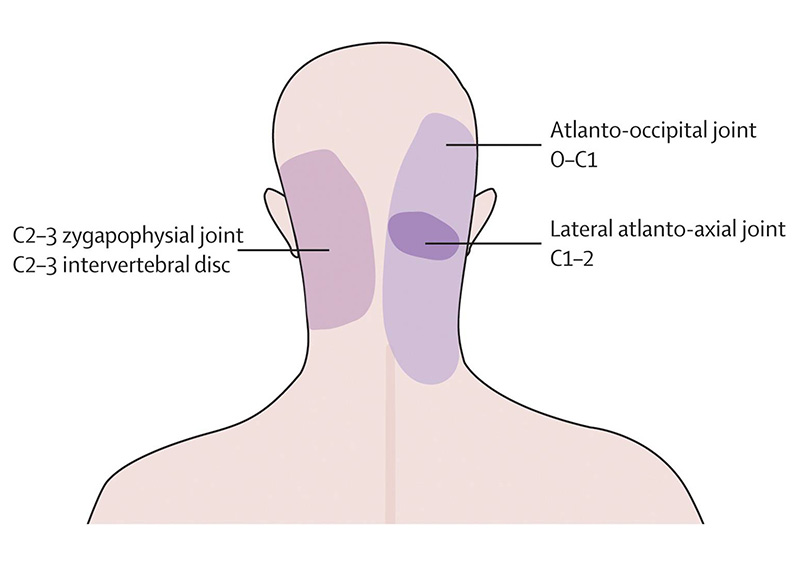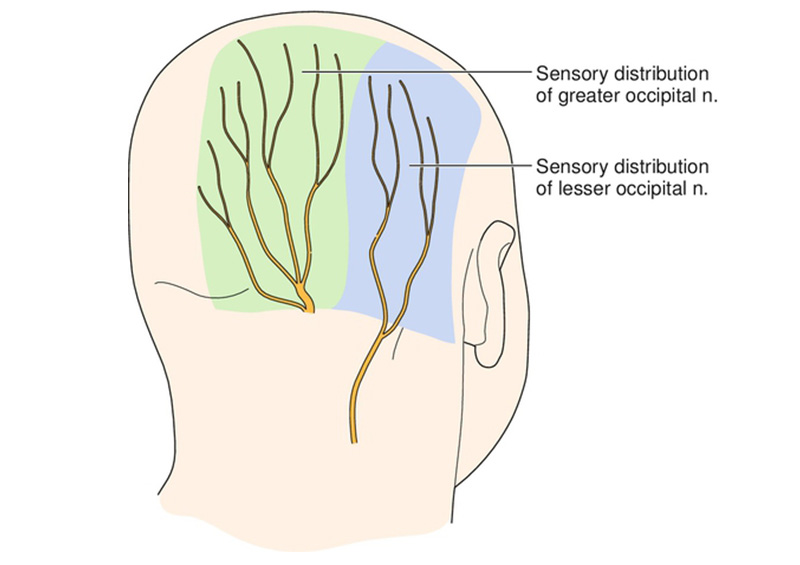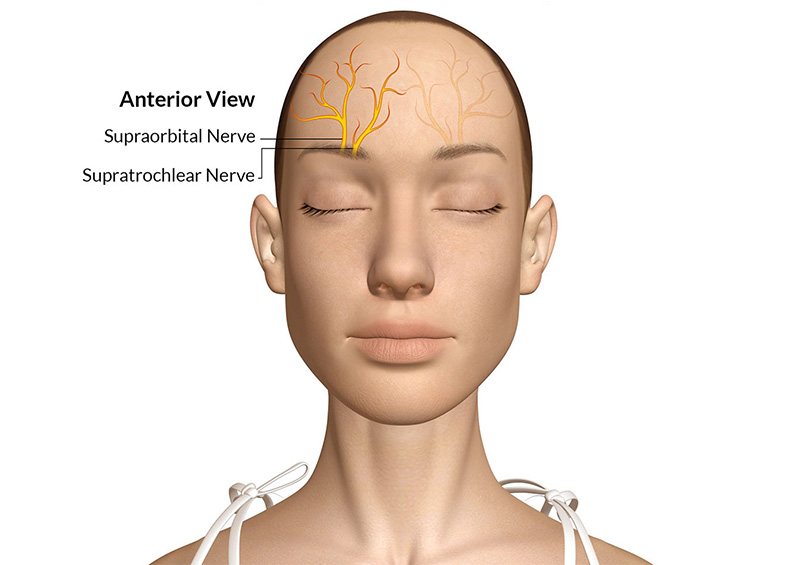Head pain or headaches following a motor vehicle accident can be serious if left untreated. Severe headaches should be evaluated immediately as there can be risk for serious brain damage, weakness, bleeding, and possibly death if left untreated. Seeing the appropriate doctors to diagnose your injuries to begin with is essential in your recovery process. Make sure your treating doctor is thorough in their evaluation and ask about the injuries below to make sure they are aware of them. Below are some of the more common accident related injuries.
Cervicogenic Headaches – Debilitating headaches following a motor vehicle accident is a frequent complaint. The C2/3 facet joint is commonly the injured joint that leads to these headaches that are unresponsive to medication management. Diagnostic blocks can help identify if the joint is responsible for the pain and thermal ablation can help alleviate these headaches. In fact many times we are surprised at the results as the patients have complete and immediate resolution of their headaches following the procedure. Dr. Parekh has treated many patients successfully including a pilot of a major airlines who had to stop flying due to the headaches. Following the treatment the patient returned back to flying. Dr. Parekh uses a special technique with bipolar lesioning to ensure the appropriate areas are treated.

Occipital Neuralgia – Patients may experience severe sharp shooting or electrical like pains from the back of their head to the front of their eye. Generally this is following the back or side of the head hitting something following impact. Patients may have direct trauma to the occiput and the pain could be mediated by the lesser and greater occipital nerves. Nerve blocks may be effective in alleviating the pain and patients may ultimately need thermal ablation.

Supraorbital and Supratrochlear Neuralgia – Pain is described as sharp and shooting pain in the forehead above the eye. Usually, the pain presents after trauma to the forehead, such as when the forehead hits the steering wheel or deployment of an airbag. Supraorbital neve block with steroid can be considered and there can also be consideration for ablation of the nerve with excellent results

Temporomandibular Joint Pain – Motor vehicle accidents resulting in rapid head and neck extension and flexion as well as lateral movement can lead to severe trauma to the jaw and specifically the temporomandibular joint. The temporomandibular joint is the most used joint in the body, used for eating and speaking. Patients may experience pain with opening and closing their mouth. They may experience pain with chewing as well and have trouble eating.
